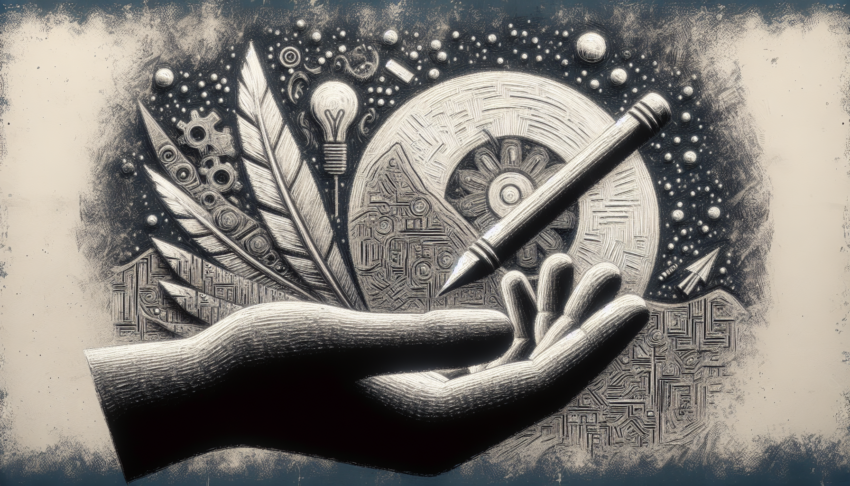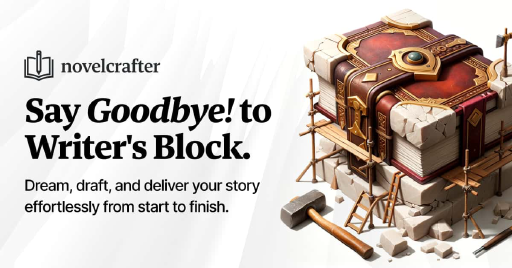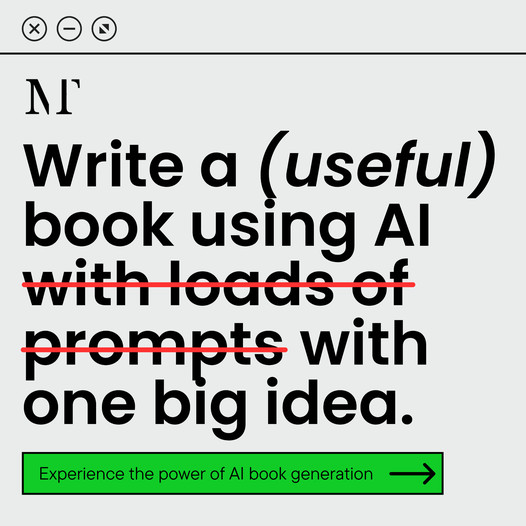Understanding Story Structure
Story structure is the backbone of storytelling, acting like a road map that writers use to make sure their tale keeps the reader hooked from start to finish. It’s the magic wand authors wave to make sure emotions run high and readers can’t put the book down.
Elements of Story Structure
Think of story structure as a recipe for a captivating tale. It’s about setting the stage with characters and a world, stirring up some trouble, and then resolving all those twists and turns in a way that makes sense. Here’s a handy breakdown:
| Element | What it Does |
|---|---|
| Opener | Sets the scene, introduces who’s who, and gives a taste of the story’s flavor. |
| Incident | Kicks off the big problem or challenge. |
| Crisis | Turns up the heat, setting up the biggest moment. |
| Climax | Where everything comes to a head and the main showdown happens. |
| Ending | Wraps things up and lets everyone know how it all turned out. |
These pieces are what get the story moving and keep the plot interesting (Blurb).
Story Archetypes
Story archetypes are like storytelling templates. They’ve been around forever because they tap into universal themes we’re all drawn to. Christopher Booker laid out seven main ones:
| Archetype | What’s It About? |
|---|---|
| Overcoming the Monster | Characters face off against some big bad evil. |
| Rags to Riches | Someone climbs up from nothing to something. |
| The Quest | A journey to snag something super important. |
| Voyage and Return | An adventure that changes the traveler. |
| Comedy | A funny tale with lots of confusion that ends happy. |
| Tragedy | The protagonist’s downfall, often because of their own flaws. |
| Rebirth | A big personal change or redemption for a character. |
These archetypes help writers craft stories that feel familiar and real. They make sure you create tales that both entertain and resonate with readers (Blurb).
By understanding these building blocks and archetypes, you can write stories that really hit home. For those looking to dig even deeper, checking out writing tools for plot structuring might bring more tricks to the trade.
Common Narrative Structures
Writers keen on spinning gripping tales know that the right narrative structure can make all the difference. These story frameworks act like a trusty map, helping authors chart their stories fabulously. Let’s chat about three standout models: the Classic Story Structure, The Hero’s Journey, and the Three-Act Structure.
Classic Story Structure
Think of the Classic Story Structure like your grandma’s old recipe book—tried and true. It breaks down your tale into digestible chunks. You’re lookin’ at the opener, where we meet the big personalities and where they hang out. Then bam! You’ve got your inciting incident—a plot bomb goes off, and suddenly everything’s cooking. Rising action adds some spice, pumping up the drama. The climax? That’s the jaw-dropping, heart-racing showstopper. And as the excitement tapers, falling action helps tie up the chaos, with resolution bringing a satisfying wrap-up to the literary feast Blurb.
| Element | Description |
|---|---|
| Opener | Roll call! Introducing those characters and their digs. |
| Inciting Incident | Unleashing the main beef or challenge. |
| Rising Action | Pumping up the plot with escalating drama. |
| Climax | High noon showdown, where the chips are down. |
| Falling Action | Smoothing out resolutions and winding down. |
| Resolution | Wrapping it up neat and tidy. |
This structure is your trusty sidekick to keep eyeballs glued to the page.
The Hero’s Journey
Joseph Campbell hatched The Hero’s Journey, a tale as old as time that puts the spotlight on transformation. It’s a step-by-step guide for your main character—from that all-important call to adventure to diving head-first into the unchartered with Crossing the Threshold. Along the way there are Trials that test every fiber of their being, leading to that sweet Achievement. And the homecoming? The hero comes back all shiny and new, transformed like Forrest Gump after his little jaunt across the states Habit Writing.
 What Poetry Feels Like
What Poetry Feels Like| Stage | Description |
|---|---|
| Call to Adventure | The hero gets their marching orders. Let’s roll! |
| Crossing the Threshold | Off they go, stepping away from one’s comfort zone. |
| Trials | A bumpy road filled with hurdles. |
| Achievement | Victory is theirs! They find what they’re seeking. |
| Return | Back to the start but with brand new mojo. |
This journey zooms in on the nitty-gritty of character growth and touches on what it means to be human.
Three-Act Structure
The Three-Act Structure is like your favorite sandwich—simple yet loaded with everything you need. It’s split into three tasty layers: you kick things off with the setup, set it all ablaze with confrontation, and bask in the satisfying end at resolution Habit Writing.
| Act | Description |
|---|---|
| Setup | Meet everyone, set the scene, and light the first spark. |
| Confrontation | Chucks hurdles and amps up the stakes. |
| Resolution | Watch it all come together, tying up the loose bits. |
With each act hitting a specific narrative goal, it’s no wonder so many scribes rave about this method.
These storytelling templates are the secret sauce in a writer’s toolkit. Add in some cool writing gadgets and plot tricks, and the world becomes your humble oyster. So whether you go the tried-and-true route, saddle up with the hero’s journey, or prefer a neat three-act stage, magic scenes await—the kind that sticks with a reader long after the last page.
Advanced Story Structure Techniques
For authors wanting to take their storytelling game up a notch, getting a grip on advanced plot structuring techniques can really shift the gears. Here, we’re gonna break down three crafty methods: The Snowflake Method, the Five-Act Structure, and Subplots Integration.
The Snowflake Method
The Snowflake Method is kind of like a recipe where you build your story from a tiny seed and watch it blossom into a full-blown narrative. Start off with a one-liner of your story and bit by bit, stretch it out into a detailed plan.
Here’s a quick rundown of the ten steps:
| Step | What’s It About? |
|---|---|
| 1 | Jot down a one-sentence summary of your story. |
| 2 | Turn that sentence into a paragraph explaining the starting point, hiccups, and finale. |
| 3 | Dive into who your characters are, their wants, and dreams. |
| 4 | Expand your paragraph into a full-page spread. |
| 5 | Write character stories outlining their paths. |
| 6 | Stretch the page into a four-page tale. |
| 7 | Turn it into a complete story blueprint. |
| 8 | Pen down the first draft of your novel. |
| 9 | Tweak the draft with feedback. |
| 10 | Wrapping it up for the final manuscript. |
This method is all about evolving in bite-sized bits, helping the writing flow naturally with room to tweak when needed.
Five-Act Structure
Taking it up a notch from the usual three-act gig, the Five-Act Structure spices things up with more stages. It splits the tale into five clear parts, giving room to dig deep into character arcs and pump up the tension.
| Act | What It Does |
|---|---|
| 1 | Setting up the characters and the scene. |
| 2 | Heating things up by introducing challenges. |
| 3 | The big showdown where conflicts reach their boiling point. |
| 4 | Cooling down and heading towards resolution. |
| 5 | Wrapping it all up and clearing up the loose ends. |
Each act helps in keeping the pace just right and deepening character arcs, perfect for those looking to weave intricate stories with depth.
Subplots Integration
Subplots are like the sprinkles on a cupcake, adding flavor and texture to your main story. When subplots are stitched in just right, they can beef up the central plot while adding extra twists and turns.
Here’s a nifty checklist for getting your subplots into shape:
| Consideration | What’s It About? |
|---|---|
| Staying Relevant | Make sure subplots vibe with the main themes. |
| Who’s Involved | Let the sidekicks take the subplot wheel. |
| Bringing Conflict | Ensure subplot tension complements the main story spin. |
| Wrapping Up | Knot subplot endings with the main tale for a nice wrap. |
By smartly intertwining the main storyline with juicy subplots, writers keep readers hooked while broadening the storytelling canvas.
Using tools like Novelcrafter writing software can be a game-changer, offering the features you need to sketch out and whip your narratives into shape. With a little know-how and the right tools, authors can step up their storytelling and create tales that really grab the audience.
Genre Influence on Plot Structure
Crafting a good yarn boils down to knowing how genres twist plot structures into reader-pleasing shapes. This wisdom helps storytellers nail the vibe folks expect, all while keeping things fresh.
Genre Cheatsheet
Each genre’s got its hidden playbook, a set of just-right rules and structures that avid fans come to know and love. Understanding these can steer writers on the right path. Take a sappy romance; it’s all about the feels and heart flutters between folks. A whodunit flips the script, diving into mystery and riddles. So, getting the basic feel for your genre of choice is a game-changer, like mentioned by Habit Writing.
| Genre | Reader’s Wishlist |
|---|---|
| Romance | Heartstrings and love stories |
| Mystery | Twists: who did what and why? |
| Fantasy | Worlds of magic and wonderland |
| Science Fiction | Tomorrow-land with tech marvels |
Using tools like digital sticky notes or storyboard apps makes sense of how these genre puzzles fit together. Mind maps are a super tool to keep storytellers on the straight and narrow, ensuring genre rules are followed (Jaire Sims).
Putting Your Spin on It
Sure, sticking to genre is key, but don’t lose your voice in the shuffle. Writers should splash their own quirky colors onto the canvas, making their works memorable standouts. Hit that sweet spot of keeping groundbreaking ideas while delivering what the folks are braced for.
Using gadgets like the novelcrafter writing software comes in handy. It helps keep tabs on your thoughts, laying out tales, and growing characters who fit snugly in the genre but still let you stretch your creative muscles.
One cool trick is mixing and matching genres—sprinkle a little mystery onto that romance plot to wake up sleepy-eyed readers. Keeping it original with these mash-ups helps your tale stay vibrant and lively while tipping its hat to tried and true genre staples. For more nifty tricks on keeping your plot tidy and brisk, check out story outlining tools that keep narrative threads from getting tangled and pacing tight.
Writing Tools for Plot Structuring
The right tools can genuinely boost how writers piece together their stories. There are a bunch of options out there to help writers gather their thoughts and whip up stories that stick together well. Here, we’ll chat about what makes Scrivener handy, how outlining your story is pretty useful too, and how plot points make all the difference.
Scrivener Features
Scrivener really shines as one of the go-to writing tools for plot structuring. It wraps everything you need into one neat package, making it easy for authors to plan and put words on the page without a fuss. Noteworthy aspects of Scrivener include:
| Feature | Why It Rocks |
|---|---|
| Warm-Up Process | Writers can kick-off by looking over their notes and character doodles, making it easier to slide into the flow of writing (Helping Writers Become Authors). |
| Scene Review | The tool lets folks check and tweak yesterday’s work, helping them polish up the first draft and keep the story smooth. |
| Word Count Monitoring | Scrivener’s got you covered with word count checks for each scene and overall targets, nudging you along towards those big word count goals (Helping Writers Become Authors). |
| Customization | With options like full-screen and split-screen editing, writers can set up their workspace in a way that suits them (Helping Writers Become Authors). |
These features not only make writing less of a hassle but also keep everything neat and moving along.
Story Outlining Benefits
Outlining your story is a big step that helps map out how your tales will unfold. What outlining brings to the table includes:
- Seeing the Big Picture: Outlines help writers look at the big story sweep, spotting plot gaps or weird turns along the way.
- Keeping it Together: Breaking a story into chunks helps manage folks in it, where they live, and what keeps themes rolling throughout the piece.
- Saving Time: A good outline trims down the chance of having to redo loads later, cutting down on time spent in the drafting stage.
Using writing software like novelcrafter writing software pushes these perks even further, offering features to lay out plot points and character journeys in a way that’s easy to see.
Plot Points Development
Nailing plot points is key to crafting tales that draw readers in. These points are the story’s high notes that propel the action. Important bits for developing plot points are:
| Key Thing to Consider | Why It Matters |
|---|---|
| Spot Key Moments | Laying down major plot points helps build a story that’s steady with its ups and downs. |
| Tying into Character Arcs | Exploring how plot twists affect character journeys keeps the story feeling tight and interesting. |
| Timing is Everything | Figuring out when to drop key details can amp up suspense and hold the reader’s attention. |
By tapping into tools made for plotting, like story planning tools, writers can streamline their plotting and pen stories that hit home with their readers.
Structuring Relationship Arcs in Series
Crafting intriguing relationship arcs in a series is like adding the secret sauce to your storytelling recipe. This guide spills the beans on essential parts needed to spice up these relationship tales, like juggling antagonists and keeping readers glued.
Relationship Plotlines Overview
In the grand show of a series, relationship plotlines play in the background, intertwining and changing as the story unfolds. Think of each book as a chapter where scenes weave together, building layers to create real and relatable relationships as the pages turn. This step-by-step approach nurtures those long-term connections.
Having more than one relationship drama brewing at once is highly recommended. Take “Revenge of the Sith,” where Obi-Wan and Anakin’s intense bond shares the stage with Anakin’s love story with Padmé. It’s a tapestry with contrasting threads, creating a rich fabric that keeps us turning pages.
To keep that spark alive, let these plots grow and shift as each new volumes hits the shelves. Revisit past conflicts but sprinkle in fresh hurdles to keep everything as exciting as a Netflix binge session.
Balancing Antagonists
Ah, the villains of the piece. They’re the spice that throws characters into the ring of conflict. Avoid repeating the same old enemies – find new ways to stir up trouble! Each round needs fresh faces to test these bonds.
Picture it: a couple has it tough in one book, only to see a new rival step onto the stage in the next. Jealousy or misunderstandings creep in, brewing just the right dose of drama. This endless dance of unforeseen twists ensures the tension never feels stale, letting characters evolve and grow.
Maintaining Interest
Keeping readers on the edge of their seats across a series is no small feat. It calls for a dose of creativity every step of the way. Toss in those bigger obstacles and shake things up – predictability is the worst enemy.
Delving into universal themes like trust and loyalty offers that juicy meat for engrossing plotlines. Weave these themes into your writing, giving your series a beating heart and enriching the reader’s journey.
Don’t forget about using handy helpers like plot structuring tools to stay organized and craft those arcs with flair. Programs, like novelcrafter writing software, help make your plotting sleek and your writing groove unstoppable. It’s like having a partner-in-crime for creating tales that leave an impression.


 Grab my poetry book, 'we're all just wanderers in the end' Here
Grab my poetry book, 'we're all just wanderers in the end' Here AD: Your Book Finally Written...
AD: Your Book Finally Written...